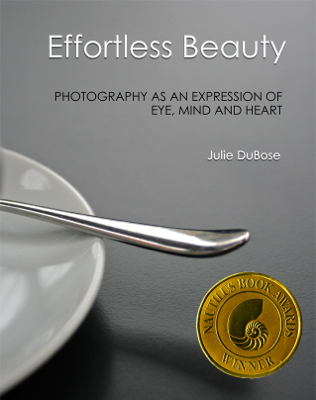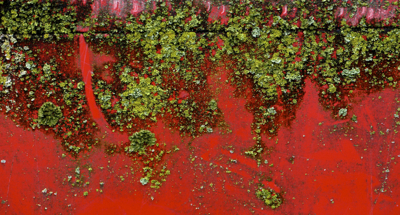Most of us are familiar with the disappointment and acceptance of our photographic images being less than we had hoped for. Here are some common frustrations we have with what comes out of our camera.
1. Our photos don't express what we were trying to photograph. We often feel that we "just didn't get it".
2. We want to take photographs, but aren't inspired to photograph anything we see. We don't know how to find something to photograph that is a new and fresh.
3. We love to shoot photos and have done it for years, but now we are bored with shooting the same things over and over.
4. The images are often blurry.
We can either trust the camera to make it happen for us, or get involved in what is commonly thought to be the complex business of what we need to know to take a good photograph.
But there is another way to find happiness in our engagement with photography.
With a few adjustments, we can dramatically improve our success expressing what we are inspired to photograph. And not only that, we can dramatically increase how often we see something we want to photograph.
Here are a few suggestions:
Train yourself to carry your camera with you everywhere. A small pocket camera or a cell phone camera of excellent quality will work fine.
Carrying your camera with you can be a reminder to pay attention to the visual world around you.
As you walk around your house, and go through your day, try to see everything as though for the first time. Pretend you're an alien on Earth and you don't know what everything is and what it means. By being open and available to see our world, we notice surprising, stunning visual phenomena happening around us all the time. Usually we ignore or discount much of what we see. Now is a good time to open up our field of vision.
Work to shift your mind-set so that instead of looking for something that will make a good photograph, open yourself to new possibilities that catch your attention. Start by looking at simple aspects of the visual world, color, texture, light, line and pattern. Don't get stuck labeling and thinking about what you see. Just simply notice.
Let your eye and mind function as a unit, completely available to look and see. You don't need to think about what you are seeing. Just pay attention to what you see rather than your thoughts about what you see, and if something comes to you out of nowhere, photograph it. There is no need to strategize how to make it better or more interesting or appealing. If you photograph just what you see, then it will be interesting enough as it is.
Try just photographing exactly what stops your eye and mind, and you can see for yourself how vivid and immediate these images are. I often am asked, "How did that happen? Did you use Photoshop to make it look that way?". No, actually, when we see directly, the world really looks that sharp and brilliant. This is the potency of seeing things as they are, rather than as we think they are. The filters of projection and overlay are absent from our experience of the perception, and the result is pure connection with what we have seen, being expressed through our camera.
When you are stopped by a perception, ask yourself, "What have I seen? What is part of it and what is extra and doesn't belong? Where does the perception begin and where does it end? Is it a vertical or a horizontal perception?". Don't let yourself be distracted and vague about this part. This is how you understand the composition of the photograph you will take. Take the time you need to get clear about it. The perception dictates the composition. There is no need to impose some idea onto your perception of how it should be organized.
And when you know the photo will have all the ingredients of what you have seen, then its time to actually shoot the image.
Make sure that you hold your hand steady and don't move until after you have pressed down the shutter firmly. Often people are actually moving as they take a photo. This makes for blurry images. Staying still with your perception is important to making a precise expression of it. You also need to be the minimum amount of distance back from your perception for the camera to focus, so if you are going in close, make sure you are not pushing in closer than this minimum distance. You can usually set your camera to beep when you are in focus. This helps a lot to avoid the disappointment of an image that is not clear.
Make sure you put your point of focus on the main subject of the photograph.
If you can photograph exactly what you see, your experience of seeing will be easily translated into your image. Because you know exactly what you have seen, and have expressed it precisely with your camera, there is no more disappointment. Photographing in this way produces deep pleasure, in ourselves, and in whoever sees our images.




